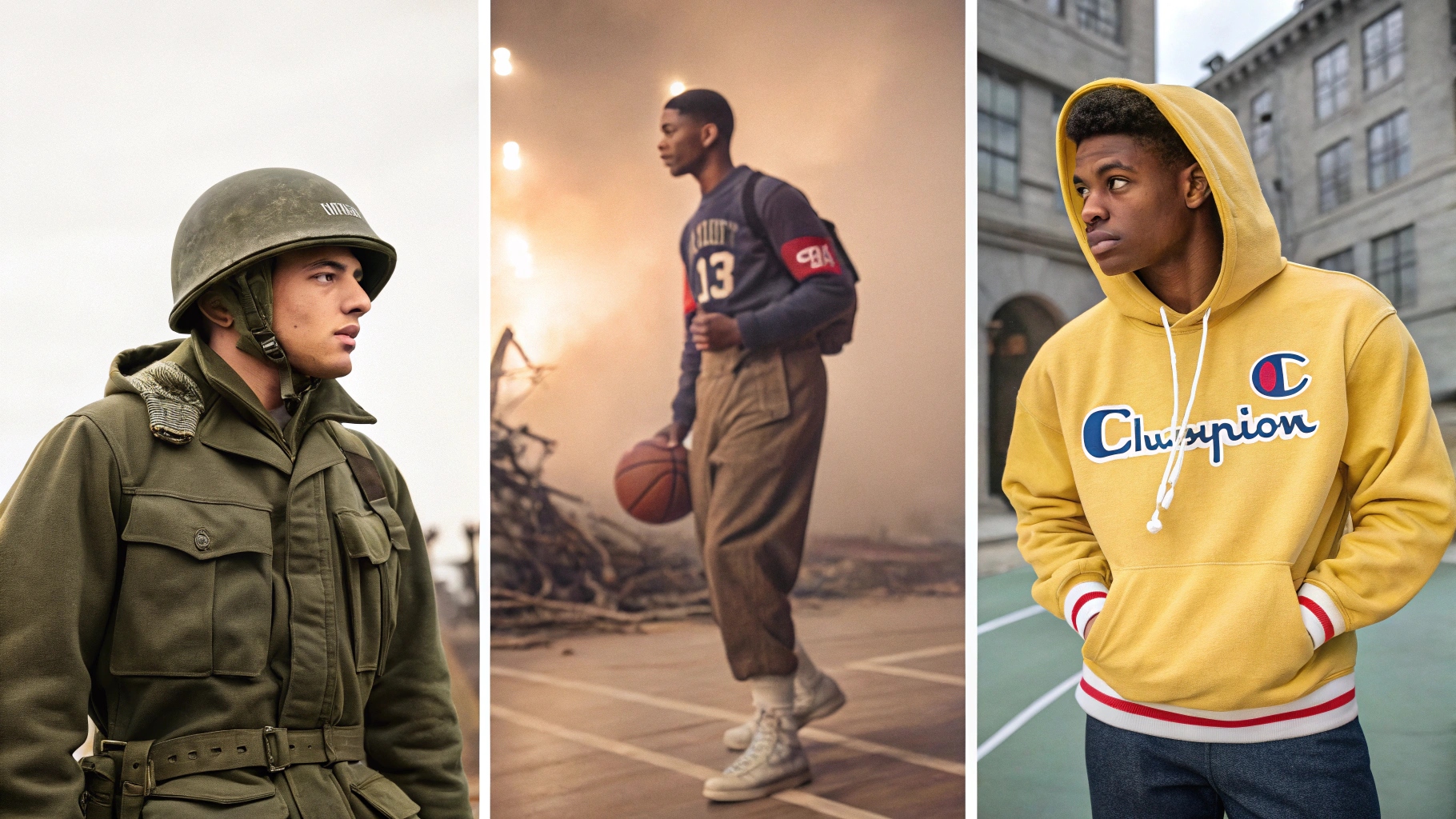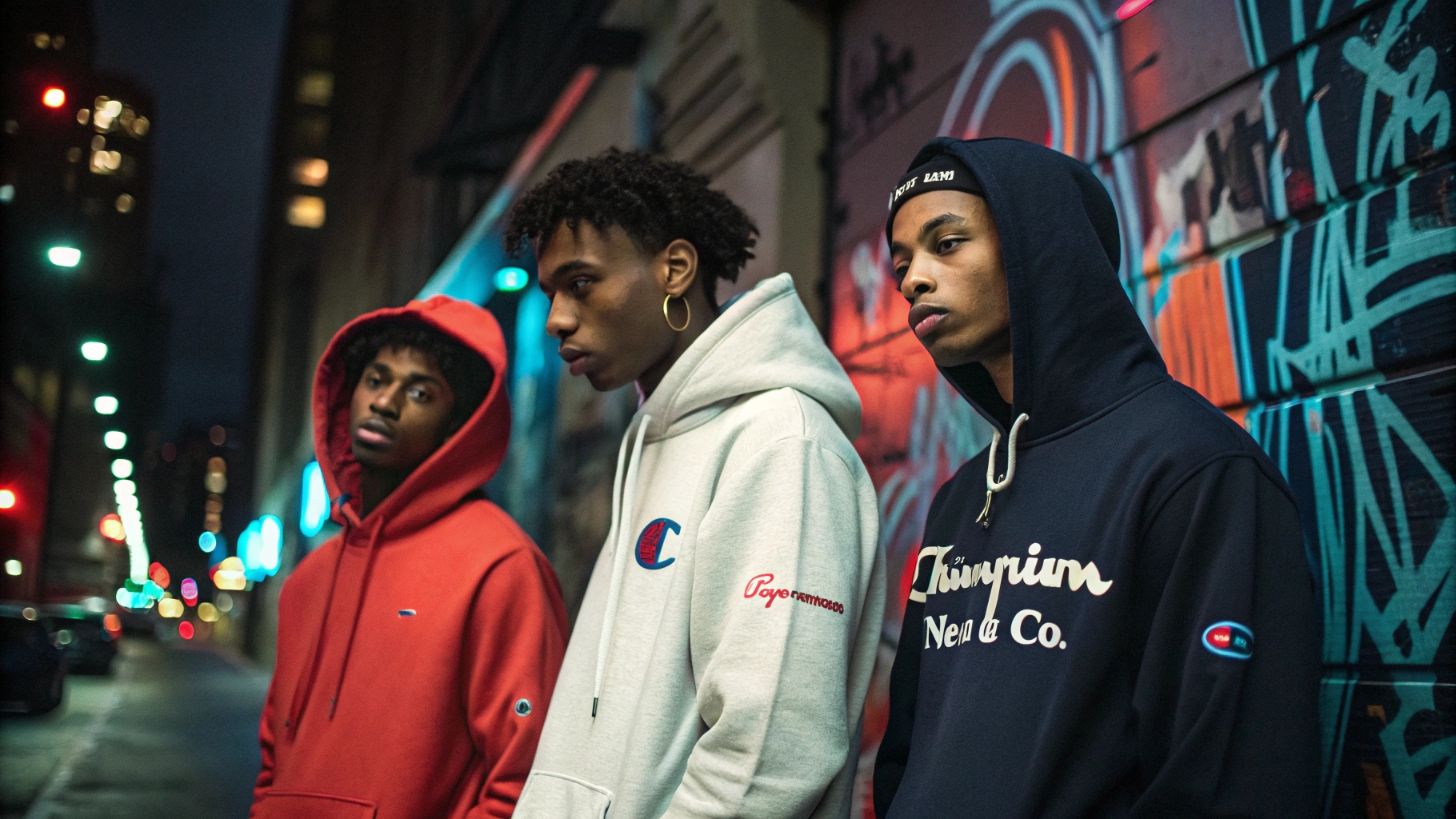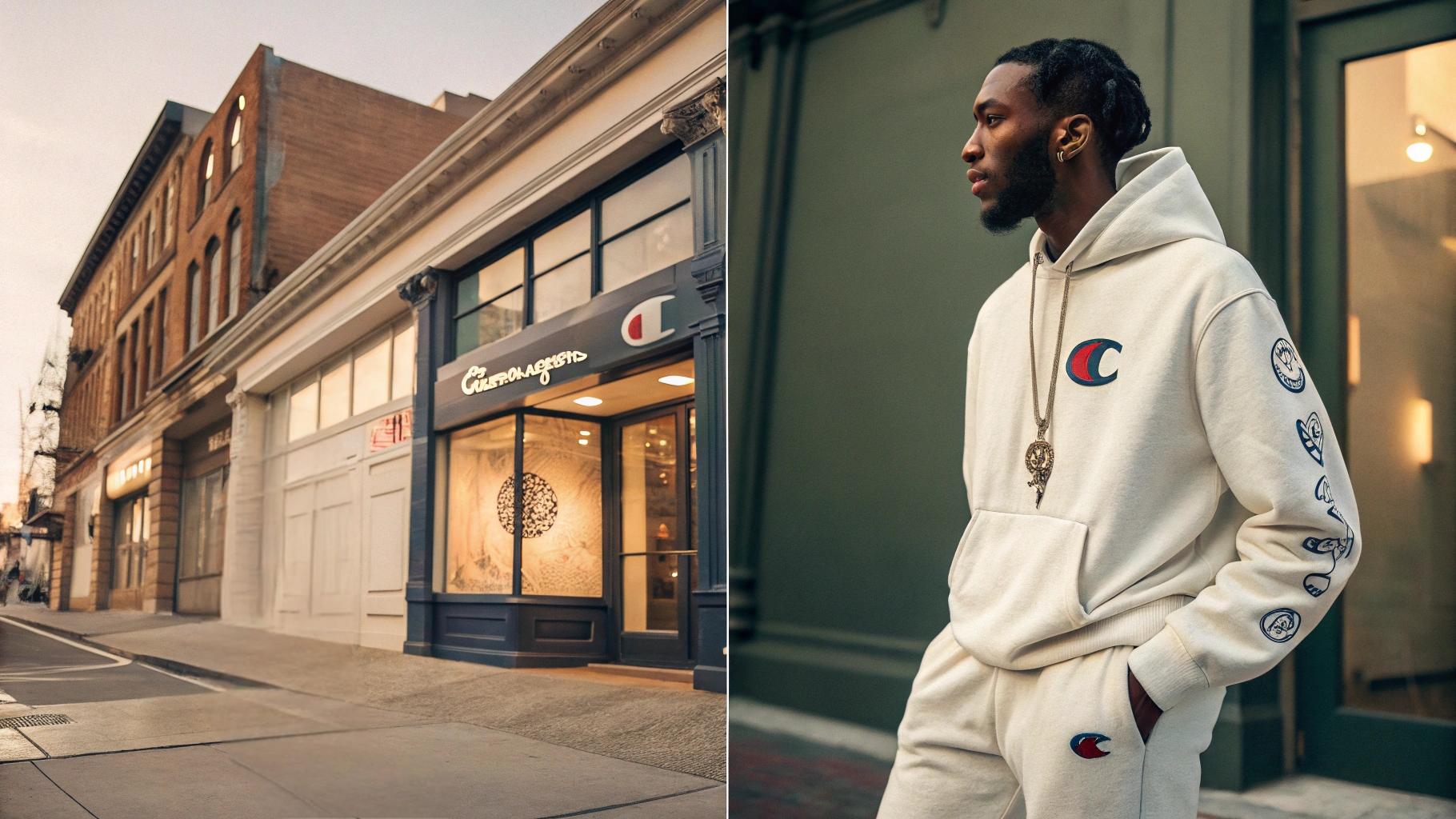Table of Contents
- Where Did Champion Begin and How Did It Grow?
- How Did Collaborations and Celebrities Fuel Its Rise?
- What Role Did the Streetwear Trend Play in Champion’s Revival?
- What Can New Brands Learn from Champion’s Success?
---
Where Did Champion Begin and How Did It Grow?
Early History: Utility Over Fashion
Champion was founded in 1919 as “Knickerbocker Knitting Company,” later rebranded. It earned respect supplying durable sweatshirts to schools and the U.S. military during WWII.
Reverse Weave Innovation
In 1938, Champion created the Reverse Weave® technology, helping garments resist vertical shrinkage[1]—a hallmark still used today.
Peak in Athleticwear
During the 1980s and 90s, Champion outfitted NBA teams and became a staple in high school sportswear, building mass-market familiarity.
| Year | Milestone | Impact |
|---|---|---|
| 1919 | Brand Founded | Initial focus on sports utility |
| 1938 | Reverse Weave Patent | Reinforced fabric innovation |
| 1990s | NBA Uniform Partner | Expanded athletic visibility |
| 2006 | Acquired by Hanes | Global reach and mass production |
[1] Reverse Weave is a registered Champion design and remains a quality benchmark in fleece construction.

---
How Did Collaborations and Celebrities Fuel Its Rise?
Champion x Supreme and Beyond
Collaborations with streetwear icons like Supreme, Vetements, and KITH propelled Champion into fashion culture rather than just function.
Celebrity Endorsements
Artists like Kanye West, Rihanna, and Travis Scott have been photographed in Champion, organically boosting its visibility.
Global Resale and Hype Culture
Limited drops created demand spikes. On resale platforms like Grailed and StockX, Champion collabs became status symbols.
| Collaboration | Release Year | Resale Price Range | Fashion Impact |
|---|---|---|---|
| Supreme x Champion | 2018 | $180–$300 | Streetwear explosion |
| Vetements x Champion | 2017 | $400–$900 | Luxury street crossover |
| KITH x Champion | 2020 | $150–$250 | Modern American classic |
Note: Celebrity visibility combined with drop culture turned Champion into a social media-ready brand.

---
What Role Did the Streetwear Trend Play in Champion’s Revival?
Nostalgia and Retro Appeal
Champion’s ‘90s aesthetic aligned with the vintage revival wave, making its original cuts and logos highly desirable.
Affordable Streetwear Alternative
Unlike high-priced designer drops, Champion offered quality hoodies under $80, making it accessible to a wider audience.
Retail Expansion and Hype
From Urban Outfitters to SSENSE, Champion became omnipresent while still maintaining credibility with niche fashion fans.
| Element | Relevance to Streetwear | Example | Consumer Impact |
|---|---|---|---|
| Boxy Silhouette | Retro styling | Reverse Weave Crewneck | Authenticity |
| Logo Placement | Minimal but recognizable | C-logo on sleeve | Brand recognition |
| Color Blocking | Bold visuals | Heritage Hoodie | Trendy nostalgia |
[2] GQ and Hypebeast both ranked Champion in their top 10 revived brands of the 2010s.

---
What Can New Brands Learn from Champion’s Success?
Brand Longevity and Reinvention
Champion survived by staying true to its roots while embracing modern trends. This balance made it relevant to multiple generations.
Strategic Partnerships
Carefully selected collabs built exclusivity without compromising core identity—an approach many emerging brands can emulate.
Mass Appeal Meets Custom Identity
While Champion went broad, brands today may choose custom production to establish a niche, high-quality image.
| Strategy | Champion Example | How Bless Can Help |
|---|---|---|
| Heritage Reinvention | Reverse Weave relaunch | Recreate vintage styles with custom fabrics |
| Collaborative Drops | Supreme, Vetements | Launch limited runs with private labeling |
| Affordable Premium | $60 Hoodies | High-quality hoodies with low MOQ |
Want to Build a Brand Like Champion? At Bless Denim, we help creators and fashion startups manufacture custom hoodies, tees, and more—backed by 20 years of production expertise.

---
Post time: May-16-2025








